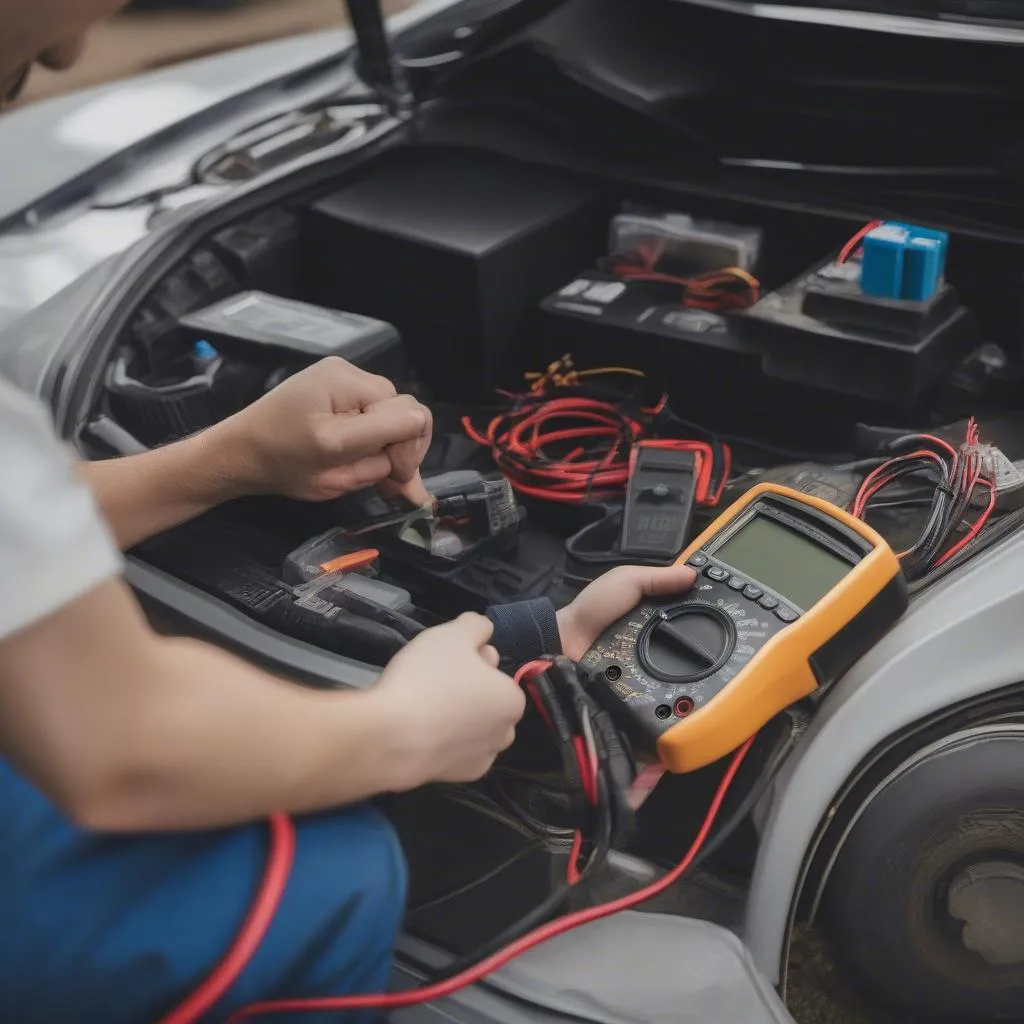Have you ever been driving down the road and suddenly your check engine light comes on? It’s a scary feeling, especially if you don’t know what’s wrong. Maybe you’re on a long road trip in the middle of nowhere, far from any repair shops. In that case, you might be wondering, “How can I check my DTC codes without a scan tool?”
Understanding DTC Codes
DTC codes, or Diagnostic Trouble Codes, are essentially error messages that your car’s computer system uses to communicate any problems it’s detected. These codes are usually stored in your vehicle’s Electronic Control Unit (ECU), which is like the brain of your car. The codes provide valuable information about what’s causing your car to malfunction.
Why Check DTC Codes Without a Scan Tool?
There are times when a scan tool might not be readily available, especially if you’re stranded on the side of the road. Perhaps you’re on a tight budget, or maybe you just want to try and troubleshoot the issue yourself before calling a mechanic.
How to Check DTC Codes Without a Scan Tool
While a scan tool is the most reliable way to read DTC codes, there are several alternative methods you can use:
1. The “Blink Code” Method
This method involves watching the Check Engine Light (CEL) for a specific pattern of blinks. Each blink pattern corresponds to a particular DTC code. This method is popular with older cars, especially those without OBD-II connectors.
To perform the blink code test:
- Turn the ignition key to the “ON” position.
- Locate your Check Engine Light (CEL).
- Count the number of quick flashes and longer pauses.
- Refer to your car’s service manual or an online DTC code database to decode the blink pattern.
For example: A code might be represented by a pattern of three flashes, a pause, then two flashes.
Important note: The blink code method can be quite tedious, especially if you have multiple codes. It might not always be accurate, particularly with newer cars that use more complex systems.
2. Using a Multimeter
If you’re comfortable working with electrical systems and have a multimeter, you can use it to directly access the DTC codes stored in your car’s ECU. This method is a little more advanced, requiring some technical knowledge and a basic understanding of electrical circuits.
Here’s a general overview of how to do it:
- Connect the multimeter to the ECU’s data bus (usually a 16-pin connector under the hood).
- Read the voltage readings on the multimeter.
- Refer to a DTC code database to decode the voltage readings.
Keep in mind: This method requires a certain level of experience and can be quite complex. If you’re not comfortable working with electrical systems, it’s best to avoid this approach.
3. Using a Smartphone App
There are various apps available on smartphones that can help you read DTC codes. These apps require a Bluetooth OBD-II adapter that plugs into your car’s diagnostic port.
However, there are some drawbacks to using these apps:
- They might not be as accurate as dedicated scan tools.
- Some apps might not support all vehicles.
Despite the drawbacks, these apps can be helpful for basic troubleshooting, especially if you’re stuck on the side of the road.
Interpreting DTC Codes
Once you’ve obtained your DTC codes, it’s crucial to understand what they mean. You can find a comprehensive list of DTC codes online or in your car’s service manual.
For example, a DTC code like “P0171” might indicate a problem with the fuel trim system. You’ll need to research this specific code to determine the potential causes and possible solutions.
Finding Solutions
When you’re trying to figure out what’s causing a problem, it’s important to consider all the possibilities. For example, a simple issue like a loose gas cap can trigger the check engine light, while a more complex problem might require professional attention.
Remember: Always consult a certified mechanic if you’re unsure about any repairs or need further diagnosis.
Frequently Asked Questions
1. How do I clear DTC codes without a scan tool?
You can try disconnecting the battery for a few minutes to reset the ECU. This will often clear the codes, but it won’t fix the underlying problem.
2. Can I reset my check engine light without a scan tool?
There are some methods for resetting the check engine light, but it’s often best to address the underlying issue before doing so. In many cases, the check engine light will come back on if the problem persists.
3. Is it safe to drive with a check engine light on?
It’s not safe to drive with a check engine light on without knowing what’s wrong. The light could indicate a serious issue, such as an engine misfire or a malfunctioning sensor.
Additional Resources
- https://diagxcar.com/check-engine-code-scan-tool/
- https://diagxcar.com/vag-com-diagnostic-cable/
- https://diagxcar.com/scan-tool-for-2002-ford-expedition/
- https://diagxcar.com/scan-tool-obd-mx-bluetooth/
- https://diagxcar.com/how-to-use-rmm-scan-tool/
Conclusion
While there are some ways to check DTC codes without a scan tool, it’s often best to invest in a proper scan tool if you need to perform regular maintenance on your car. This will give you more accurate and reliable information. If you’re ever stuck on the side of the road with a check engine light on, try using one of the methods outlined above. But remember, consulting a qualified mechanic is always the safest option.
Do you have any questions about DTC codes or need help troubleshooting your car? Leave a comment below!
Need help with diagnostics or software installation? Contact us on Whatsapp: +84767531508 for 24/7 support.
 Check Engine Light
Check Engine Light
 OBD-II Connector
OBD-II Connector
 Multimeter
Multimeter


